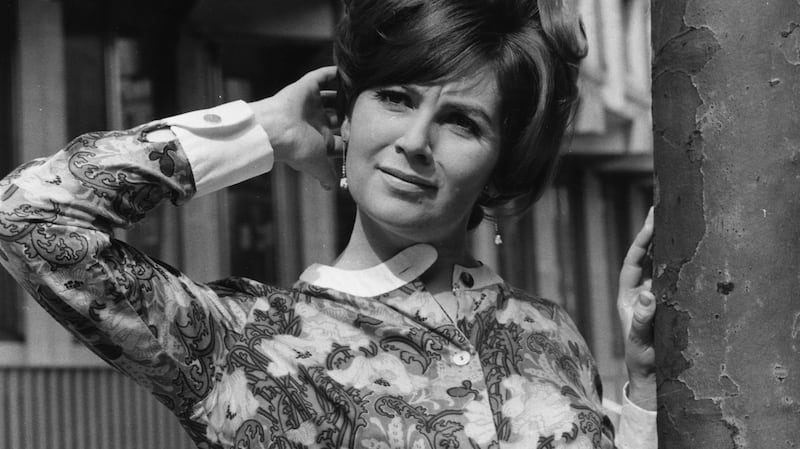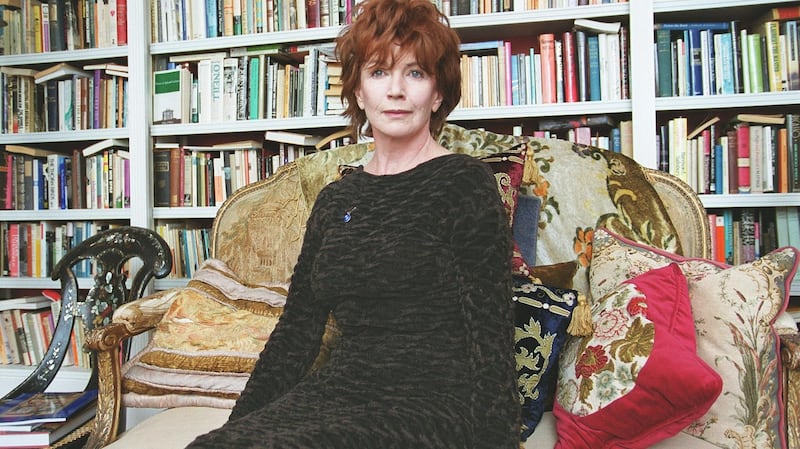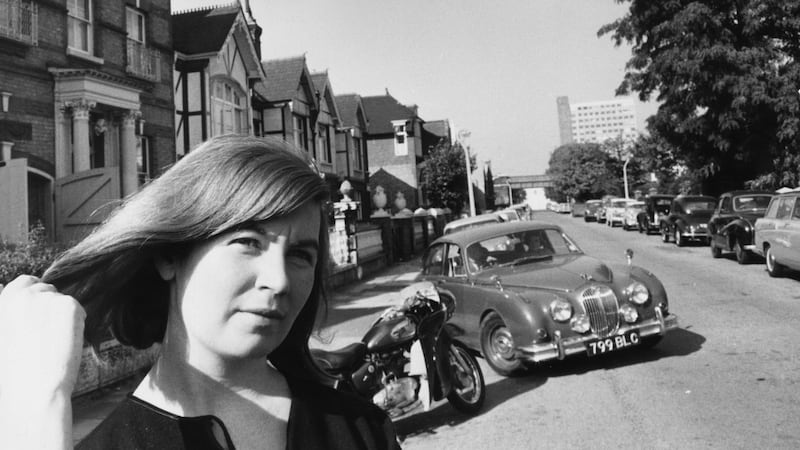Eimear McBride has described Edna O'Brien's The Country Girls Trilogy (1960-64) as "one of the most famous, infamous, beloved, and influential Irish novels of the 20th century". Similar words might as readily be applied to O'Brien herself, whose immense contribution to Irish literature was celebrated this week at UCD, where her later archives are held.
Earlier this month, Dublin City Council unveiled The Country Girls Trilogy as the 2019 choice for their One City, One Book initiative. Sixty years ago, however, the books that made up this trilogy – The Country Girls (1960), The Lonely Girl (1962) and Girls in their Married Bliss (1964) – garnered a very different reaction. All three were banned in Ireland for promoting sexual immorality, the second after scheming between the Archbishop of Dublin John Charles McQuaid and the then Minister of Justice Charles Haughey (neither man, as it turned out, a paragon of virtue).
An early, male, reviewer of O'Brien once lamented: "'What I fear is that Miss O'Brien is drawing for material like a spider from her own inside. Her writing is egocentric". Though this charge is absurd – if O'Brien was only writing about herself, how did she manage to outrage so many people? – it lingered until the early 2000s when the extraordinary scholarship of the Field Day Anthology of Irish Women's Writing (2002) and two essay collections dedicated to O'Brien's work uncovered the deeply political nature of her "personal" fiction. These studies revealed a writer whose work ranged across the world, exploring emigration and immigration, sexuality and repression, nationalism and terrorism, institutions and abuse, and war and refugees. For generations of Irish commentators, however, it was easier to dismiss O'Brien as narcissistic, rather than to confront the raw wounds she exposed.
Far from being obsessed with herself, O'Brien is fascinated with other people, communities, nations and histories. Her most recent books continue to forthrightly tackle the issues of the 21st century, as in her transatlantic masterpiece The Light of Evening (2005), her latest novel of conflict and displacement The Little Red Chairs (2015), and her current project on Nigeria. For her, delving into the self is really diving out into the other.
To study her papers at UCD is to be caught up in a creative hurricane. Alongside traditional manuscripts and typescripts, a profusion of densely inscribed receipts, post-its, envelopes, hotel stationary and Aisling copybooks bear witness to O’Brien’s compulsive need to record and reimagine her world.
Her mother Lena often told her “paper never refused ink”, and the archives bear this out. However, while Lena intended this as a disparagement of her daughter’s profession, we can read it as an acknowledgement of O’Brien’s great gifts of a writer: her deep passion; artistic urgency; and soaring imaginative drive. Through draft after careful draft, O’Brien channels this whirlwind into the published novels we have today. Her papers display not only her explosive creative energy, but also her profound craft. Alongside the magic, we see the toil that makes fiction truly great.
In one of her archived notebooks O'Brien has written of "the general impossibility of any two people understanding each other". Or, as she puts it in her explosive 1972 novel Night: "To have met and not met, like cyclists, in a spinner at night, greeting, without a snatch of conversation, without a holler; recognisable to each other only by the strength or the weakness of their flashlights, or their tail-light… Not known". Yet this impossibility never stops O'Brien writing, never stops her quest to record her own world and in doing so to enlighten ours.

On Monday we invited five of Ireland’s finest writers, Danielle McLaughlin, Louise Nealon, Sean O’Reilly, Éilís Ní Dhuibhne and Frank McGuinness to UCD to explore O’Brien’s papers, and respond to her work in front of an audience of students, staff and public. Extracts from three of these contributors are below, and you can listen to all of them over the coming months on the UCD Scholarcast website http://www.ucd.ie/scholarcast/. – Dan O’Brien and Eve Kearney
Louise Nealon
Last year, during lunch at the Cork International Short Story Festival, I was asked to name a dead Irish woman writer who I admired. I went through the list - Maria Edgeworth, Lady Gregory, Elizabeth Bowen, Kate O’Brien, Molly Keane, Maeve Brennan. “Yes, but have you actually read them?” Claire Keegan asked. I had spent the morning in her workshop listening to her quote Chekhov. No, I admitted. I might have skipped over a story or two in an anthology but I couldn’t remember them. Then a jolt of inspiration hit me. “How about Edna O’Brien? I love her.” Keegan laughed, tossed her glorious mane of red hair over her shoulder and said: “We would know if Edna O’Brien died”.
I have read more O'Brien since the day I tried to dig her an early grave. I still love her. Actually, I fancy her. I am not alone in this. Marlon Brando slept in her kitchen, Paul McCartney strummed a song about her, Jude Law kissed her, Richard Burton tried his best. I saw the gleam in Claire Keegan's eye when she proclaimed her to be still very much alive. My grá for O'Brien is similar to O'Brien's own affections for one of her schoolteachers – a nun who has cropped up in her fiction many times. Just as the narrator in Sister Imelda aims to follow her crush into the convent, every Irish writer should aspire to follow the path O'Brien has forged for us through her vocation.
Like all great writers, O'Brien suffers from an awful affliction – the need to tell the truth. She once said, "most of us in the world are hypocrites and liars a lot of the time and we gloss. We don't want our vulnerability known, we don't want our sexuality known, we don't want our outrage, we don't want those things expressed – but I do. And therefore, I do upset. I think all writers do". Her novel Down by the River, published in 1997, did upset the Irish public. The novel was based on the X case of 1992 involving a 14-year-old girl who was became pregnant as a result of rape and was prevented from travelling to England for an abortion. Twenty-six years later, and just after the vote to repeal the Eighth Amendment, Down by the River still makes for uncomfortable reading.
The novel strikes a different tone to the measured pace of O'Brien's short stories. It reads like a suspense thriller, bringing the reader along in short flashes of scenes, at first focusing on the young protagonist Mary, before expanding its scope to implicate the whole country in her situation. Perspective shifts frantically between Mary and the rest of the country – guards, solicitors, doctors, journalists, the church and campaigners of the same debate that Ireland was ready to have only a couple of months ago. O'Brien was decades ahead of her native country in addressing painful truths. Down by the River manages to distill the grief that all Irish women have felt, either consciously or unconsciously, merely by existing in the world.
In her memoir, Country Girl, O'Brien writes about an argument she had with a man over her description of a blue road: "He erupted saying there was no such thing as a blue road, but I knew that there was. I had seen them, I had walked on one". In her life and work, O'Brien has persisted down that blue road and made other people – men and women – see it too. As an Irish woman, I am indebted to O'Brien for seeing that blue road and for writing words before we realised they needed to be written.
Sean O’Reilly
In the Forest was published in 2002. The novel's central drama was identifiably related to events in rural Co Clare in 1994, which are outlined in brief in the author's note lying at the back of the book like a memorial. This was not the first time O'Brien had used actual people's experience in her work, so what was it about In the Forest that produced such an outcry and led Fintan O'Toole to argue it was a "moral" – and therefore aesthetic – mistake?
Leaving aside many of the ever-ramifying questions about the relationship between fact and fiction, and the uncertain nature of the responsibility a writer should bear towards a real subject, I would suggest that at least some of what was so disturbing about the novel comes down to its form, the merciless, half-awake style and unstable, almost subliminal structure.

The roots of the book reach into dream. The chronology of events is fragile, prone to doomed repetition, the slightest thing is an omen and, like in classical tragedy, all that happens is somehow bound to happen. “He pushes her towards a raised mound under a horseshoe of pine trees . . . To one side there is a shovel and a furrow newly dug, an inevitability to it all. Her blood freezes, because there is only there and only then . . .”
I would say that the most dangerous quality of this kind of storytelling is the absence of a clear, consoling narrator. The chapter pieces, short, mostly fragmentary, changing with the speed of a thriller from private thought to public witness, some from the point of view of peripheral unnamed characters, is as far as you can get from the fact-based approach of true crime. Different levels of reality, states of consciousness, compete for significance. The voice in the killer’s head is just one more in the terrified chorus. There is no authority to tell us who to blame, where to kneel or what justice might feel like.
In a chapter called Fiesta, O'Kane witnesses something that literally blows his mind. In "a pagan feast on the mountain", the townspeople are performing the 18th century comic-erotic poem The Midnight Court dressed in carnivalesque livery, half-human, half-animal. From a hiding-place, O' Kane watches Eily, his future victim, show the audience the devil's hoof mark on her breastbone. "To the crowd," we read, "it was all fun, make-believe, but to O' Kane it was real, she had stepped out of her own world into his, into his transmogrified dream of her. . ."
In the throes of make-believe, to step over into the dream world of a mad stranger. To pretend you have a voice in your head is only the swing of a cow’s tail away from hearing its darkest instructions. Impersonation is a cold word for shape-shifting.
Here, like a strange plumage in the trees, we catch a glimpse of a scary ambiguity. In one sense the novel might be read as a critique of the secret, stunted emotional landscape of this country which, despite its modern urban ambitions, can still create someone like O’Kane, and his Irish brand of blood-lust, but in a much subtler and more provocative sense the novel contains traces of a complicated longing for the old mysteries of enchantment we are in a desperate hurry to forget.
In The Forest is dangerous writing, the best sort. It takes you to places no one talks about, where fact and fiction, innocence and guilt, are as inseparable as the dancer from the dance. The book's last line, another shiny charm, should be handled with extreme care.
“Magic,” it says, “follows only the few.”
Danielle McLaughlin
I expect that Rita, the maid, will admit us and we will be ushered into the room where the piano is. It is a black piano. I saw it the day the Coughlans moved here, saw four men drag it in, sweating and swearing, and when it was put down it emitted a little sound of its own, a ghostly broken tune. – The Green Georgette
Edna O'Brien's writing has for over half a century illuminated the workings of interlocking systems of power in a particularly Irish context. In an interview with Eileen Battersby in The Irish Times some years ago, O'Brien said: "I take in my little corner of experience and I register and retell it". I recognise my Ireland, the rural one, in O'Brien's fiction.
Part of the great power of O’Brien’s writing may be attributed to its independence of thought and language. Her stories are her own faithful record. When I was growing up in a rural Co Cork parish in the 1970s, I don’t recall much discussion on the subject of class. I do remember once asking an adult what “working class’”was, and not getting a satisfactory answer. I certainly don’t recall any discussion around intersections of class and gender. I’m not sure we had the words for it back then. But in the way that fiction – good fiction – can speak of things before we have the words for them, O’Brien, even before I was born, was bringing to the page the impact of Ireland’s social stratifications on the lives of women, writing about them truthfully and unswervingly.

Structurally Green Georgette is in two parts. There's Thursday, before the visit, teeming with hope, imaginings, anticipation. Then comes Monday, opening with ominous finality: "We went."
The young narrator and Mama have been invited to the Coughlans, something which the narrator describes as “a miracle”. The invitation came about by dint of Mama performing a miracle of her own. She may not have turned water into wine, but when the cream in the creamery vats turned sour, Mrs Coughlan, who was hosting a supper, sent her maid to Mama in search of some.
Mama then got the white jug. It was a lovely long slender jug, with a picture of a couple in sepia, standing, modestly, side by side. There were three large pans of cream put to settle in the dairy and with the tips of her fingers, Mama skimmed the cream into the jug. She did it perfectly, making sure that no milk got in. The separated milk was a bluish white in colour, not like the butter yellow colour of the cream. She refused the money.
This exquisite description of Mama skimming cream, captures both the magic of the process, and the child’s admiration of her mother who has so deftly saved Mrs Coughlan, a person of note, from embarrassment. Mama has no need to call upon a son to perform the miracle. Mama does it herself. This is a very female miracle, and a particularly rural Irish one.
The image is drawn with such lightness of touch that we don’t notice this paragraph doing its work. But while it slyly captivates us with the beauty of image and language, it delivers a punch to the gut, too. Because who in this story is the cream, who the bluish white milk? The divisions in this society are deep, and they run through everything.
O'Brien once remarked in an interview in the Guardian: "It's very hard to get the truth in it and the sheen on it". Getting the truth in and the sheen on is exactly what O'Brien has always done, and she does it magnificently.


















